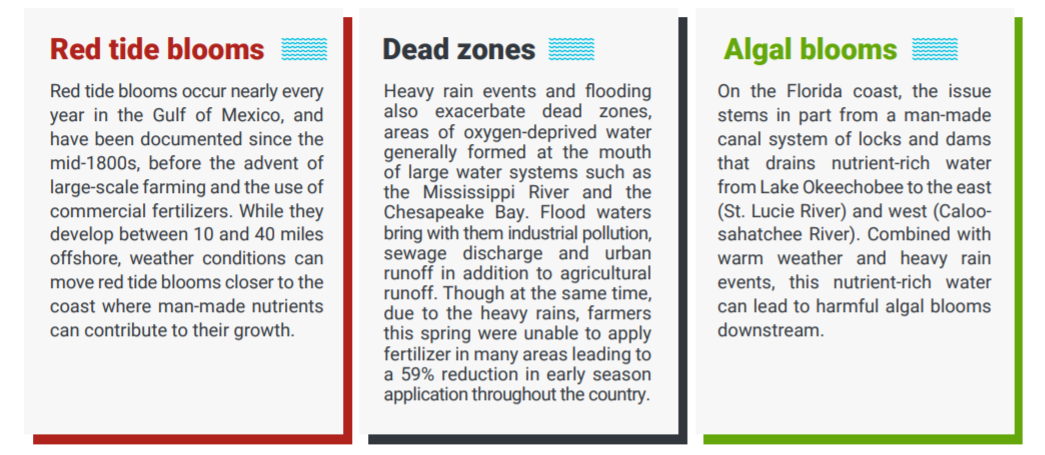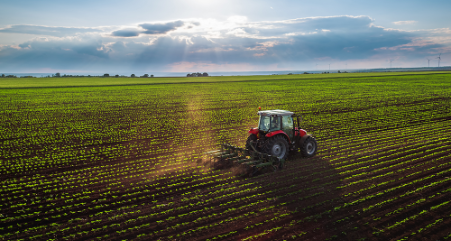Red tides and blue green algal blooms have been making headlines lately, and the news hasn’t been good. You may also have heard about fertilizer’s role in this water quality challenge. But what are red tides, algal blooms and dead zones and how does fertilizer usage affect them? And importantly, what is the fertilizer industry doing to be part of the solution?
What are the problems?

How can the fertilizer industry be part of the solution?
While the causes of the harmful algal blooms, red tides and dead zones are many, farmers and the fertilizer industry are working hard to protect and improve our country’s waterways by being part of the solution. We strongly support education, research, and outreach on innovative farm practices known as the 4Rs – use of the right fertilizer source, at the right rate, at the right time, and in the right place. These practices are the foundation for science-based management of all nutrients – whether from commercial or organic sources.

For more information, see our Harmful Algal Bloom FAQ.
Know the Facts
- In 2011, the U.S. Department of Agriculture (USDA) added 4Rs to its revised Natural Resources Conservation Service (NRCS) Conservation Practice Standard Code 590. This standard encourages farmers to employ new technologies to reduce runoff and improve water quality.
- The fertilizer industry strongly supports and encourages the adoption of 4R Nutrient Stewardship practices through the following channels:
- With the support and services of these retail fertilizer dealers, farmers are using the 4R framework to achieve positive crop yield results while protecting the environment.
- The industry recognizes outstanding 4R practitioners through TFI’s 4R Advocate Award program. Since 2012, the 4R Advocate Program has recognized 35 pairs of farmers and ag retailers who manage 163,675 acres in 19 states.
- With the support and services of these retail fertilizer dealers, farmers are using the 4R framework to achieve positive crop yield results while protecting the environment.

- The fertilizer industry also engages in numerous public-private partnerships in support of the 4R’s:
- The industry actively advocates for the inclusion of resources in the conservation title of the 2018 farm bill to assist farmers with planning and implementation of the 4Rs.
- In February of 2018, the North American fertilizer industry committed an additional $6 million to its 4R Research Fund. Since 2013, the fund has dedicated $8.3 million towards 4R nutrient stewardship research at Land Grant universities. The fund supports 25 projects in the United States and Canada and leverages matching public and private funds to allocate a total of $16.2 million to 4R research.
- The industry supports the development of state and regional 4R certification programs. The first 4R Nutrient Stewardship Certification Program began in Ohio, and encourages agricultural retailers, service providers and other certified professionals to adopt proven best practices through the 4Rs. Today, it provides a consistent, recognized standard for agricultural retailers who cover 2.9 million acres in Indiana, Michigan and Ohio.
- The industry actively advocates for the inclusion of resources in the conservation title of the 2018 farm bill to assist farmers with planning and implementation of the 4Rs.

Learn more about the 4R Nutrient Stewardship program at 4Rfarming.org and the 4R Nutrient Stewardship Certification Program at 4Rcertified.org.




